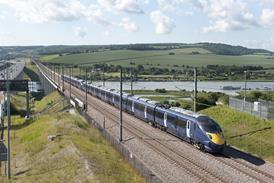Whither the train crew?
By Railway Gazette International2016-08-07T07:00:00

How many people does it take to run a train? The answer, of course, depends on the type of train, the location, and whether you include staff on and off the vehicles. But the question is constantly being asked by both freight and passenger operators.
Already have an account? LOG IN
To continue…
You’ve reached your limit of content for the month
Get enhanced access to Railway Gazette news and weekly newsletters.

For almost 200 years, the Railway Gazette Group has been the leading provider of news, analysis and intelligence for the international railway industry. Our independent and authoritative content is read by operators, regulators and the supply industry in over 140 countries using a variety of tailored subscription packages.
Site powered by Webvision Cloud



